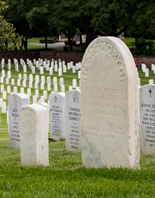ABMC Education
The American Battle Monuments Commission (ABMC) has updated its site to include interdisciplinary classroom activities that highlight a diverse set of topics relating to both World War I and World War II. ABMC manages permanent U.S. military cemeteries, memorials, and monuments within the United States and abroad. The lesson plans are geared for grades 6-12 and offer different levels of challenge, adaptations, and methods for extension.
“Horace Pippin: The Artist of No Man’s Land” introduces students to the experience of an African American soldier in World War I and how he used writing and painting to explain what he saw. “Tweeting the Air War Against the Nazis” employs technology to help students understand the role the Allied Air Forces played in the Normandy invasion.
Additionally, the user can search for lessons by grade level and subject: grades 6-8 or 9-12, Art, Art History, ELL, Journalism, Language Arts, Mathematics, Science, Social Studies, and Special Education. The lesson plans provide teachers with detailed teacher tips including links to interactive maps, primary sources, timelines, and videos.
One of the new features is “Teacher Voice” pieces on some activities. These provide a teacher’s feedback on their experience with teaching the activity in their classroom and include suggestions for adapting the activity according to time restraints or specific classroom needs. There is also a backpack feature that allows the user to bookmark items.
Fallen Hero profiles detail the experiences of individual service members during World War II. Teachers and students can view eulogy videos and primary sources on each individual’s profile page. Teachers can use collections of primary sources provided onsite to help their students visualize the war and the lives of their servicemen.
